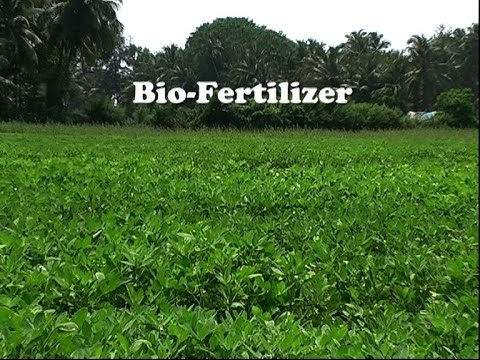
A Bio fertilizer is a substance which contains living microorganisms which, when applied to seeds, plant surfaces, or soil, colonizes the rhizosphere or the interior of the plant and promotes growth by increasing the supply or availability of primary nutrients to the host plant.

Bio-fertilizers provide “eco-friendly” organic agro-input. Bio-fertilizers such as Rhizobium, Azotobacter, Azospirilium and blue green algae (BGA) have been in use a long time. Rhizobiuminoculant is used for leguminous crops.
Azotobacter can be used with crops like wheat, maize, mustard, cotton, potato and other vegetable crops. Azospirillum inoculations are recommended mainly for sorghum, millets, maize, sugarcane and wheat. Blue green algae belonging to a general cyanobacteria genus, Nostoc or Anabaenaor Tolypothrix or Aulosira, fix atmospheric nitrogen and are used as inoculations for paddy crop grown both under upland and low-land conditions.
Anabaena in association with water fern Azolla contributes nitrogen up to 60 kg/ha/season and also enriches soils with organic matter.

Bio Fertilizers are means of fixing the nutrient availability in the soil.Bio-fertilizers add nutrients through the natural processes of nitrogen fixation.
Since a bio-fertilizer is technically living, it can symbiotically associate with plant roots. Involved microorganisms could readily and safely convert complex organic material into simple compounds, so that they are easily taken up by the plants.
Microorganism function is in long duration, causing improvement of the soil fertility. It maintains the natural habitat of the soil. It increases crop yield by 20-30%, replaces chemical nitrogen and phosphorus by 25%, and stimulates plant growth. It can also provide protection against drought and some soil-borne diseases.
Bio-fertilizers are cost-effective relative to chemical fertilizers. They have lower manufacturing costs, especially regarding nitrogen and phosphorus use.
